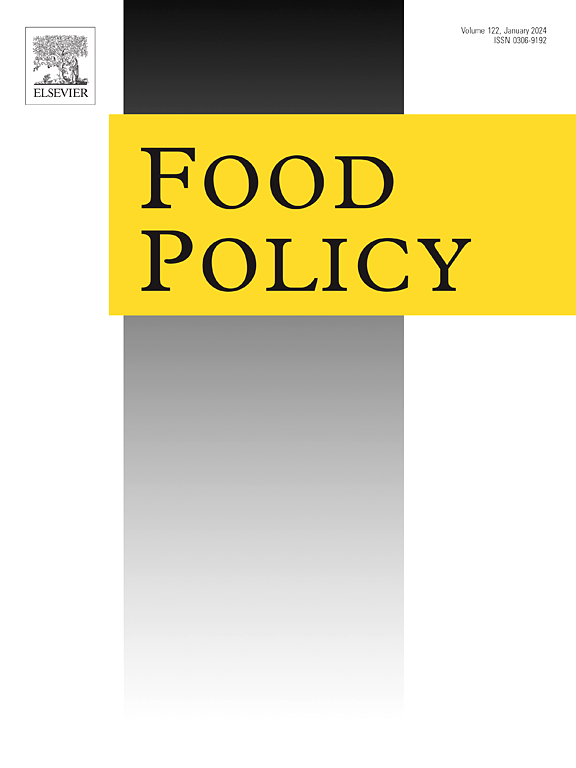高附加值农业中的产妇就业与儿童营养:埃塞俄比亚鲜切花产业的证据
IF 6.8
1区 经济学
Q1 AGRICULTURAL ECONOMICS & POLICY
引用次数: 0
摘要
在许多中低收入国家,农业食品供应链正在迅速转型。这种转变的一个重要特征是某些高价值农业分部门的增长,如园艺和用于出口的鲜切花。高价值农业的增长往往会创造新的就业机会,尤其是为妇女创造就业机会。更多的就业机会可提高农村收入,但其对社会福利的广泛影响尚未得到充分认识。在此,我们利用埃塞俄比亚的调查数据来研究妇女在花卉种植业就业对儿童营养的影响,重点关注 0-5 岁的儿童。我们建立并估计了内生转换回归,以考虑可能存在的内生性。我们的研究结果表明,母亲从事花卉种植会对儿童的身高与年龄Z值和体重Z值(HAZ和WAZ)产生负面影响。对其潜在机制的探讨表明,花卉业就业可能会影响时间分配、饮食质量、收入和女性经济自主权。母亲就业与育儿时间和动物源性食品消费呈负相关。本文章由计算机程序翻译,如有差异,请以英文原文为准。
Maternal employment in high-value agriculture and child nutrition: Evidence from the Ethiopian cut-flower industry
In many low- and middle-income countries, agri-food supply chains are transforming rapidly. One important feature of this transformation is growth in certain high-value agricultural subsectors, such as horticulture and cut-flowers for export. Growth in high-value agriculture often creates new employment opportunities, especially for women. More employment can lead to higher rural incomes, but the broader implications for social welfare are not yet sufficiently understood. Here, we use survey data from Ethiopia to investigate the effects of women’s employment in floriculture on child nutrition, focusing on children aged 0–5 years. We develop and estimate endogenous switching regressions to account for possible endogeneity. Our results suggest that maternal employment in floriculture negatively affects child height-for-age and weight-for-age z-scores (HAZ and WAZ). Exploration of the underlying mechanisms reveals that floriculture employment may influence time allocation, dietary quality, income, and female financial autonomy. Maternal employment is negatively associated with time spent on childcare and consumption of animal-sourced foods.
求助全文
通过发布文献求助,成功后即可免费获取论文全文。
去求助
来源期刊

Food Policy
管理科学-农业经济与政策
CiteScore
11.40
自引率
4.60%
发文量
128
审稿时长
62 days
期刊介绍:
Food Policy is a multidisciplinary journal publishing original research and novel evidence on issues in the formulation, implementation, and evaluation of policies for the food sector in developing, transition, and advanced economies.
Our main focus is on the economic and social aspect of food policy, and we prioritize empirical studies informing international food policy debates. Provided that articles make a clear and explicit contribution to food policy debates of international interest, we consider papers from any of the social sciences. Papers from other disciplines (e.g., law) will be considered only if they provide a key policy contribution, and are written in a style which is accessible to a social science readership.
 求助内容:
求助内容: 应助结果提醒方式:
应助结果提醒方式:


